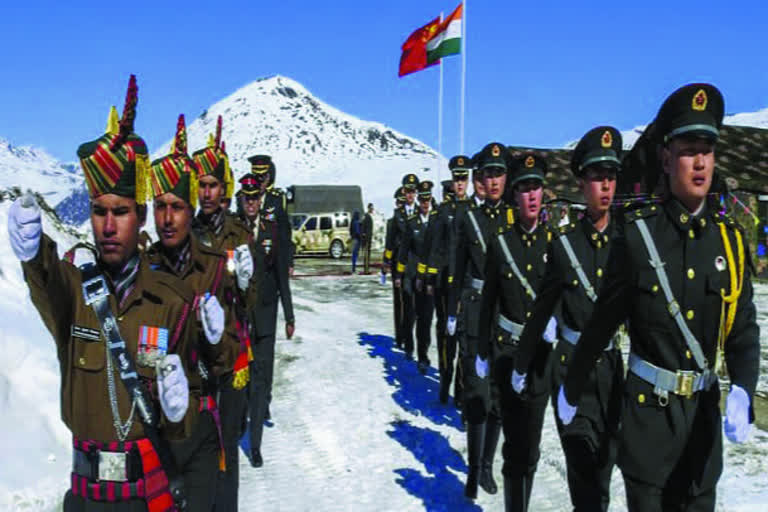New Delhi:Consequent to military and diplomatic negotiations between India and China at various levels, troops are being pulled back over the last couple of days from near 'eyeball-to-eyeball' situations at various points in Galwan Valley (Patrol Point 14), Pangong lake (Finger 4), Hot Springs (PP 15) and Gogra (PP 17) along the Line of Actual Control (LAC) in eastern Ladakh.
But these are understood to be ‘token movements’ so as to put in some distance between the troops of the world’s two biggest militaries that had an extremely violent and brutal physical fight on June 15 in Galwan Valley.
The June 15 fisticuffs led to at least 20 casualties in the Indian side and an unconfirmed number in the Chinese side. It was among a series of violent confrontations including one in the Pangong lake on May 5 and another on the May 9 in north Sikkim.
Underlining the fact that ‘disengagement and de-escalation’ may be still a far cry, an Army source told ETV-Bharat, “The present restriction (read ‘pullback’) mutually agreed by both sides is to avoid friction and violent incidents as tempers in both sides are high.”
The source added that the basic idea as of now is to “build trust” and that the pullback is to be followed by India-China militaries’ joint verification of the relocated camps.
Read:China confirms disengagement measures at Galwan region
With much more than 100,000 soldiers from both India and China, heavy guns and air force assets remaining in high alert along both sides of the LAC and nearby rear areas in rapidly-deployable positions, both militaries are also aware that while the process of restoring the status-quo to a pre-April situation will take time.
